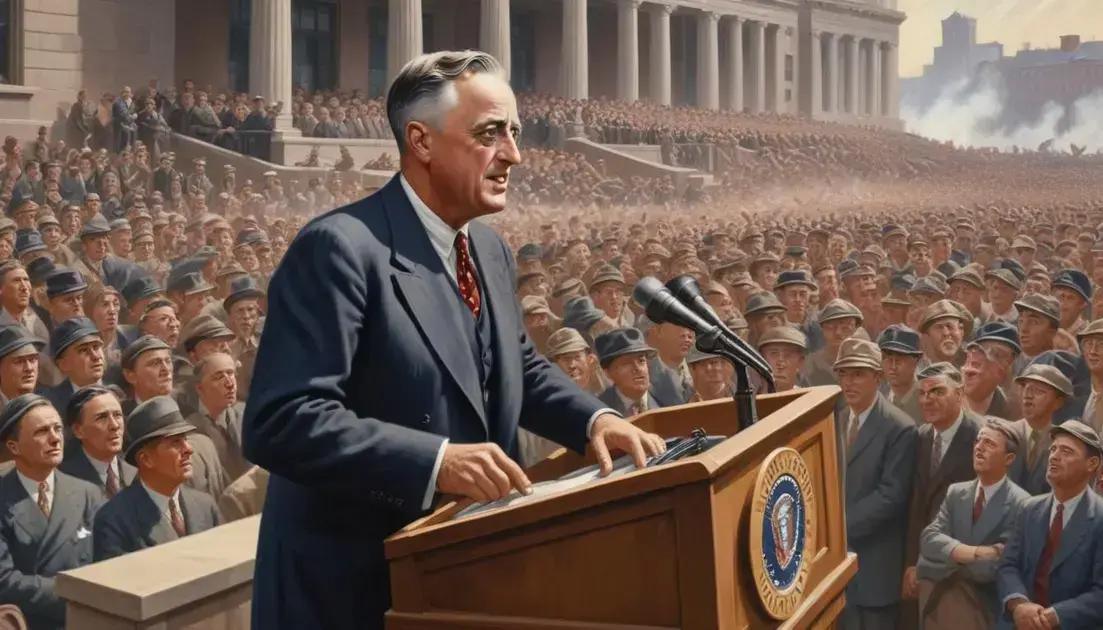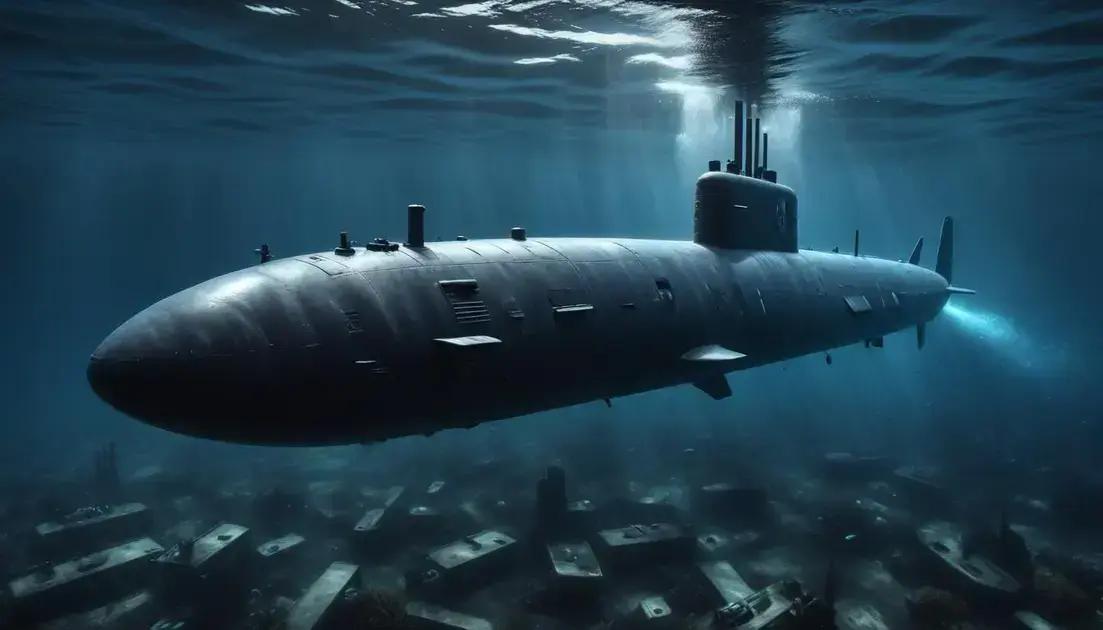
The Cold War: How It Shaped the 20th Century
The Cold War, a term coined by George Orwell in 1945, stands as a monumental event in 20th-century history. This period of geopolitical tension and rivalry between the United States and the Soviet Union, spanning from the conclusion of World War II in 1945 to the dissolution of the Soviet Union in 1991, profoundly shaped international relations, global security, and the very fabric of individual freedoms worldwide. Far from a mere “cold” conflict devoid of bloodshed, the Cold War manifested in a complex interplay of diplomatic maneuvers, economic warfare, proxy conflicts, and a relentless arms race that perpetually threatened global annihilation. This essay will explore the origins, key events, global ramifications, and enduring legacy of the Cold War, demonstrating its continued relevance in the 21st century.
The Seeds of Discord: Post-War Tensions and Ideological Clash
The roots of the Cold War lie in the fundamental ideological differences and conflicting geopolitical ambitions of the United States and the Soviet Union. While both emerged as victorious powers from World War II, their visions for the post-war world diverged sharply. The United States, championing liberal democracy, free-market capitalism, and individual liberties, sought to establish a global order based on these principles. Conversely, the Soviet Union, committed to communist ideology, centralized planning, and collective ownership, aimed to expand its sphere of influence and establish a counterbalance to American power.
The post-war conferences at Yalta and Potsdam, while ostensibly aimed at forging a collaborative peace, instead highlighted these growing fissures. Disagreements over the future of Eastern Europe, the control of nuclear technology, and the establishment of international organizations revealed a deep chasm of mistrust between the two superpowers. The Soviet Union’s consolidation of power in Eastern Europe, establishing puppet communist regimes in Poland, Hungary, Czechoslovakia, and other nations, fueled American anxieties about the spread of communism. These actions were interpreted in Washington as a blatant violation of the principles of self-determination and national sovereignty.
The Truman Doctrine, announced in 1947, signaled a significant shift in American foreign policy. This doctrine committed the US to providing financial and military aid to countries resisting communist expansion, effectively framing the Cold War as a global struggle between democracy and communism. The Marshall Plan, launched the same year, aimed to rebuild war-ravaged Western Europe, not only for humanitarian reasons but also to bolster its economic resilience against Soviet influence. These initiatives were seen by the Soviet Union as attempts to encircle and contain its power.
The Berlin Blockade of 1948, a Soviet attempt to starve West Berlin into submission, underscored the escalating tensions. The subsequent Berlin Airlift, a daring and successful American and British effort to supply West Berlin by air, became a powerful symbol of Western resolve and a testament to the growing divide between East and West. The formation of NATO (North Atlantic Treaty Organization) in 1949, a military alliance of Western nations, and the Warsaw Pact in 1955, a corresponding Soviet-led alliance of Eastern European countries, solidified the division of Europe into two heavily armed and ideologically opposed blocs. The world was teetering on the brink of a direct confrontation.
Proxy Wars and Global Confrontation: The Korean and Vietnam Wars
The Cold War’s global reach extended far beyond Europe. Numerous proxy wars, conflicts in which the superpowers supported opposing sides, erupted across the globe, serving as battlegrounds for their ideological and geopolitical struggle. The Korean War (1950-1953) stands as a prime example. The North Korean invasion of South Korea provided a catalyst for direct military intervention by the United States and its allies, confronting the Chinese and Soviet-backed North Koreans. The resulting stalemate and devastating losses highlighted the potential for a wider, potentially nuclear conflict.
The Vietnam War (1955-1975) further entrenched the global Cold War conflict. The US involvement, rooted in the domino theory – the belief that the fall of one Southeast Asian nation to communism would lead to a chain reaction throughout the region – dragged on for decades, resulting in immense loss of life and ultimately ending in a communist victory. The Vietnam War became a profound symbol of American interventionism and the limitations of military power in countering ideologically driven movements. Both conflicts showcased the devastating consequences of proxy warfare, as the superpowers fought indirectly through surrogate states and armed groups, causing immense human suffering and leaving a legacy of instability in the affected regions.
The Cuban Missile Crisis: The World on the Brink
The Cuban Missile Crisis of October 1962 brought the world to the precipice of nuclear annihilation. The clandestine deployment of Soviet nuclear missiles in Cuba, just 90 miles from the United States, triggered a thirteen-day standoff that tested the resolve and diplomatic skills of both superpowers. The crisis, marked by intense secrecy, brinkmanship, and the potential for miscalculation, highlighted the inherent dangers of the nuclear arms race and the fragility of peace during the Cold War era. The eventual resolution, achieved through a combination of skillful diplomacy, concessions, and a degree of luck, served as a stark reminder of the catastrophic consequences of nuclear war and the importance of de-escalation.
Espionage, Propaganda, and the Arms Race: A Climate of Fear and Suspicion
The Cold War fostered a climate of intense suspicion and fear. Espionage and counter-espionage became central features of the conflict, as both sides sought to penetrate each other’s secrets and gain strategic advantages. The clandestine activities of intelligence agencies, coupled with the pervasive fear of infiltration and subversion, led to a chilling atmosphere of mistrust and paranoia. The McCarthy era in the United States, characterized by intense anti-communist witch hunts and the persecution of suspected communists, exemplified this climate of fear.
The propaganda war played a crucial role in shaping public opinion and influencing the course of the conflict. Both the US and the Soviet Union utilized various media channels, including radio broadcasts, films, and cultural exchanges, to promote their respective ideologies and undermine the credibility of their adversary. The battle for hearts and minds extended across the globe, influencing political alliances, social movements, and even cultural trends.
The nuclear arms race, fueled by a relentless pursuit of military superiority, consumed vast resources and created a perpetual threat of global catastrophe. The development and stockpiling of increasingly powerful nuclear weapons created a terrifying scenario where a single miscalculation or accidental event could trigger a nuclear holocaust. The constant threat of nuclear annihilation cast a long shadow over global politics and profoundly influenced strategic decision-making.
Economic and Cultural Competition: A Global Power Struggle
The Cold War was not solely a military and political contest; it also encompassed significant economic and cultural dimensions. The United States championed free-market capitalism and promoted economic growth through international trade and investment. The Soviet Union, in contrast, adhered to a centrally planned economy, emphasizing heavy industry and state control over production. This economic competition played out on a global stage, influencing development policies, trade relations, and the global economic order. The space race, a symbolic contest between the two superpowers, further exemplified this multifaceted competition. The launch of Sputnik by the Soviet Union in 1957 shocked the United States and triggered a massive investment in science and technology, leading to advancements in space exploration and related fields.
Culturally, the Cold War manifested in a contest of ideologies and values. The United States promoted its democratic values, individual freedoms, and consumer culture through various cultural initiatives. The Soviet Union, meanwhile, promoted its socialist ideals, collective values, and achievements in science and technology. Cultural exchange programs, while often fraught with political undercurrents, provided a platform for both sides to showcase their respective cultures and attempt to win over international audiences. This cultural competition influenced artistic expression, intellectual discourse, and even popular culture, shaping perceptions and influencing opinions on a global scale.
The Détente and the End of the Cold War: Gorbachev’s Reforms and the Collapse of the Soviet Union
By the late 1980s, the Cold War began to thaw. The economic stagnation and political repression within the Soviet Union, coupled with the rising costs of maintaining a global military and ideological competition, led to internal pressures for reform. Mikhail Gorbachev’s ascension to power in 1985 marked a turning point. His policies of Perestroika (economic restructuring) and Glasnost (openness) aimed to revitalize the Soviet economy and introduce greater political transparency. However, these reforms inadvertently weakened the Soviet system, leading to the unraveling of its political and economic structures.
The fall of the Berlin Wall in November 1989 served as a symbolic culmination of the changes sweeping across Eastern Europe. Pro-democracy movements, emboldened by Gorbachev’s reforms, successfully challenged communist rule in several Eastern European countries. This wave of democratization rapidly undermined the Soviet Union’s sphere of influence and exposed the fragility of its control over its satellite states.
The dissolution of the Soviet Union in December 1991 marked the definitive end of the Cold War. The United States emerged as the sole superpower, inheriting a world order shaped by the legacies of the Cold War. The collapse of the Soviet Union had profound global implications, leading to the restructuring of international alliances, a shift in geopolitical power dynamics, and the redefinition of global security concerns.
The Enduring Legacy: A World Still Shaped by the Cold War
The Cold War’s impact on the world extends far beyond its historical timeline. Its legacy continues to resonate in contemporary international relations, shaping geopolitical strategies, security paradigms, and even cultural perceptions. The lingering effects of the arms race, including the ongoing threat of nuclear proliferation and the challenges of nuclear non-proliferation, remain significant concerns. The Cold War’s legacy also includes the establishment of international institutions and organizations, such as the United Nations, whose structures were often formed in response to the challenges of the Cold War era.
The post-Cold War world has witnessed the rise of new global challenges, such as terrorism, climate change, and pandemics, that demand international cooperation and collaborative solutions. The experience of the Cold War provides valuable lessons for navigating these complex challenges, highlighting the importance of diplomacy, dialogue, and multilateral approaches to problem-solving.
Moreover, the Cold War’s legacy extends to the realm of culture and popular consciousness. The era’s intense political climate, espionage, and the ever-present threat of nuclear war have profoundly influenced literature, film, and other artistic expressions. The themes of political intrigue, ideological conflict, and the human cost of war continue to inspire creative works that explore the complexities of the Cold War era and its lasting consequences.
In conclusion, the Cold War represents a pivotal chapter in modern history, leaving an indelible mark on the 20th century and shaping the world we inhabit today. Its origins in ideological clashes and power struggles led to a period of intense global tension, marked by proxy wars, espionage, and a relentless arms race. The eventual collapse of the Soviet Union marked the end of this defining era, yet its legacies continue to influence international relations, global security, and our collective understanding of power, ideology, and the fragility of peace. Understanding the Cold War remains crucial for navigating the complexities of the 21st century and for addressing the persistent challenges that stem from this defining period of modern history.


